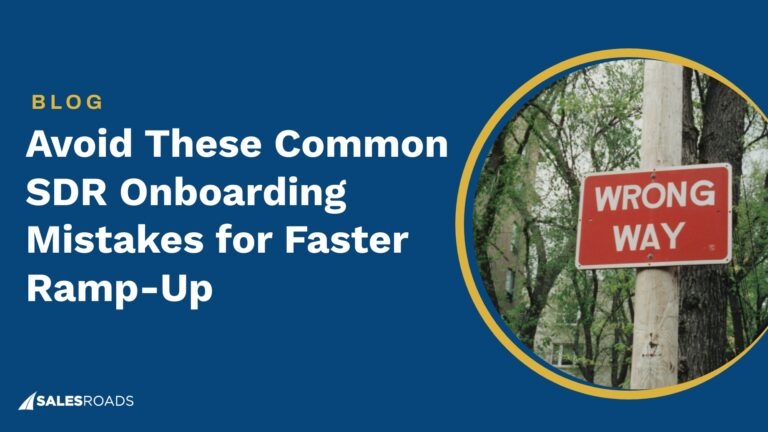A cold calling opening line is the opportunity for sales development representatives (SDRs) to introduce themselves, their company, and share the call’s purpose with the potential client. A strong opener is essential for capturing a prospect’s attention and establishing rapport.
Cold calling success rates can be significantly increased with improved opening lines. They should be concise and relevant to remove any concerns the prospect may have about the call. However, it takes time and effort to craft convincing lines. You need to research your leads, include specific elements in the opener, and follow speaking best practices once you’re on the phone.
Before You Call
Preparing your opening statements beforehand will help you make a better first impression during the cold call. Prior to dialing a prospect, you should:
- Conduct pre-call research: Gather as much background information as you can on the potential customer before picking up the phone. This research uncovers pain points that help you propose your value effectively, build rapport, and get through the conversation with minimal objections.
- Know the call’s goal: SDRs should clearly understand the aim of each call to craft an opening line that helps them achieve it.
- Practice your opening: Regardless of your experience as a sales representative, practicing your opening line helps you stay focused and push toward successful outreach.
The Components of an Attention-Grabbing Opener
Cold call opening lines are meant to captivate the listener and entice them to have a conversation with the caller. The following components are the building blocks of a powerful opener.
1. Greet the prospect
Many B2B salespeople jump straight into business, forgetting to greet the person on the other end. This can leave a bad impression on the prospect and lowers the chances of establishing rapport during the call.
A simple greeting can make a huge difference in the prospect’s attitude. It sets the tone for the conversation and highlights the SDR’s professionalism.
2. Introduce yourself and the business
After greeting the lead, tell them your name and the business you represent. Summarize these details in one line, then move on to the next part of the call.
Spending too much time introducing yourself can make the prospect lose interest. Remember, this is an unscheduled call — they didn’t plan to speak with you, so you need to make the most of their time.
3. Be grateful for their time
This basic courtesy works magic on the listener’s psyche. Thank them for being willing to speak with you and reiterate that the conversation will be short. Prospects are more inclined to listen when you respect their time.
4. Ask for permission
Next, politely seek permission to go ahead with the call. This is a small yet profound gesture that signals empathy to the prospect and reinforces your esteem for them. Always ask for permission before continuing with the conversation.
5. State your value proposition
A clear value proposition in your opener is critical to the call’s success. To create strong value proposition statements, research the client and identify how your product or service directly addresses their pain points.
Value proposition statements should solve problems, not just try to sell a product or service.
Tips for Effective Cold Call Openings
Keep these tips in mind when crafting your sales call opening statements.
Be confident
Confidence comes from a thorough knowledge of your offering and trust in the value it’ll provide to the potential customer. Sales professionals who do their homework on each prospect are more likely to open their calls with confidence and lay the foundation for a productive conversation.
It also requires consistent practice, so be patient and treat every call as a learning opportunity.
Sound natural
Successful cold callers speak to prospective clients like friends. The more human you sound on the phone, the more likely you are to capture their attention.
Cold calling scripts are effective for guiding conversations, but don’t repeat them verbatim.
Build intrigue
Generate curiosity through the cold call opener to keep potential customers on the call. Use your value proposition to state a powerful statistic about the results your product or service produced in their industry. Concrete numbers provide context for the listener so they can fully grasp the benefits you’re offering.
Mind your tone
Your tone of voice can influence the direction of the cold call. Conversations should be friendly, yet respectful and professional. You can become more amiable as you build rapport, but maintain formality and don’t sound too chatty.
Be direct
Prospects quickly grow disinterested if you beat around the bush during a cold call. Additionally, you’re about twice as likely to have a successful result1 if you state your reason for calling. Concentrate on the most relevant topics and dialogues to convert the potential client.
Best Cold Calling Opening Lines
Take advantage of the below samples to craft powerful cold calling openers for your campaigns.
“How’ve you been?”
Instead of “How are you?” use this informal variation. It creates a sense of familiarity and provides a soft landing for the rest of the call. When they hear that casual phrase, people assume it’s someone they’ve met previously, so they’re less defensive as you chat.
A study by gong.io found cold calls that start with this opener were 6.6 times more successful2 than those without it. Ask this question empathetically, then, as soon as they respond, explain why you’re calling.
“Do you have 27 seconds…”
The 27-second opening line includes a time frame for your value proposition (that doesn’t have to be 27 seconds) and a request for permission to pitch. It’s simple, direct, and effective, because the client has an idea of how long the call will take and is thus more willing to commit to the conversation.
“Good day, [Prospect], I’m [Your Name] from [Your Company]. Can I have [X] seconds to tell you how we can generate highly qualified leads for your business?”
When asked about the effectiveness of this approach, David Kreiger, President of SalesRoads, said, “The 27-second approach is the most respectful way SDRs can acknowledge the interruption of the cold call and be upfront about what it is about. Also, most people can spare 27 seconds and they say yes, and you proceed. If they can’t, you back away.”
“This is a cold call.”
When you cold call a prospect, they know you’re trying to sell to them. Admitting that up front has proven to help convince people to listen to what you have to say. Josh Braun, B2B sales expert and thought leader, listed this approach first in his collection of cold call openings that lower resistance.
“Hello, [Prospect], I’m [Your Name], [Role] at [Your Company]. This is a cold call, but do you want to know why I’m calling?”
“I’m calling because [referral] mentioned you might be interested in our services.”
Referrals are a powerful marketing tool that allows you to leverage the credibility of the referrer. Dropping a familiar name in your cold call opener helps dissipate the awkwardness of the cold call and develops rapport right away.
“I’m reaching out to you, and I’ll be reaching out to [their colleague] later today.”
Sales reps can take advantage of intra-office competition to win cold call responses. This opening line implies to the listener that you have something valuable to offer, and they’re hearing it first.
It invokes the “fear of missing out” (FOMO), and oftentimes, the prospect responds positively to your pitch as a result. However, research similar roles in a company before applying this technique to make sure it applies.
Also, attach your solution to a measurable result like increased revenue, reduced overhead, saved time, etc. As stated earlier, leads are more likely to hear you out if they have a concrete benefit to look forward to.
Words to Avoid in Cold Call Opening Lines (Expert Review)
Some words in an opening line might send the wrong message to a prospect, so it’s best to avoid them on a cold call. Here are some examples, along with experts’ suggestions for improved results.
Apologetic statements
Apologetic words or phrases like “sorry” signals a lack of confidence in the sales representative. Isaac Robertson, a co-founder of TotalShape, recommends excluding negative language and focusing on the value of the call.
Exaggerated claims
Words like “best,” “most effective” or “guaranteed results” can also be a detriment, as they sound overly sales-y. Temmo Kinoshita, Co-Founder of Lindenwood Marketing says “Whenever a cold caller promises me ‘guaranteed results,’ I’m immediately skeptical. It sets off all sorts of red flags for me.”
Pushy terms
Avoid saying things like “You should buy our product.” By using this phrase, you are immediately forcing the purchase and could sound too aggressive.
Michael Alexis, CEO of Swag.org recommends finding out what the prospective client needs instead of emphasizing the sale. He suggests a milder way to uncover this: “Ask them “Have you had enough time to evaluate your current options?” This is a less aggressive way to communicate that you know they need assistance figuring out the issues they may have. ”
Sales-related words
Words like “buy”, “sell”, “sales”, or “pitch” may get the prospect defensive and unwilling to progress the conversation. Aviad Faruz, CEO of FARUZO says “Using terms like “sell,” “buy,” and “pitch” can leave the impression that the call is solely focused on making a sale rather than building rapport. Instead, use phrases like “partner” and “collaborate” to emphasize that you’re looking for an opportunity to work together.”
Offering discounted deals in the opener also harms the success of the call. Discussing the impact of discounts on cold call openers, Luciano Colos, Founder and CEO of PitchGrade said “Discounts can be powerful motivators for some businesses, but leading with this type of language often comes across as insincere. Many busy professionals are wary of sales calls that promise big rewards or special deals and are more likely to dismiss your pitch before you explain the full value of your product or service.”
Jargon and buzzwords
Use clear language and avoid industry jargon or buzzwords that prospects may struggle to understand.
FAQs
Should I use a script?
Cold calling scripts are great for maintaining focus and tone in the conversation. However, avoid repeating it word for word. Prospects can tell when salespeople are reading from a script and are easily turned off.
How long should a cold call pitch be?

Successful cold calls typically last for 5 minutes and 50 seconds, with 70% featuring long monologues. Capture your prospect’s attention within the first 5 seconds and deliver your pitch concisely. The length of a cold call pitch should be driven by the need to maintain engagement.
Should I address the prospect by their first name, last name, or both?
First names put you on the same level as friends or colleagues and allow the conversation to adopt an amiable flow.
Carly Shortland, Head of Sales and Marketing at LinkedVA, recommends using first names because, “Using Mr./Mrs. [Last Name] seems too professional, instantly sales-y, and off-putting to many prospects.”
How can I test my opening line to improve its effectiveness?
One technique for evaluating the efficacy of your opening lines is to track how many calls it takes to schedule an appointment with a decision-maker. The fewer calls made, the stronger the opening line is.
How can I adapt my opening line to the prospect’s industry or job title?
To identify the value your company can provide a client, look at other customers in their industry. Then, craft a custom-made value proposition that encapsulates the benefits of working with you.
Does acknowledging the interruption still work as a cold call opener?
Many books and cold calling resources recommend acknowledging the interruption by saying, “I know this is a bad time,” or “I might have caught you in the middle of something.” However, cold call studies have found this line reduces the chances of having a successful call by 40%.3
How do I handle interruptions or objections right after my opening line?
Keep calm and acknowledge the objection immediately. Then, provide a concise response or a value statement that addresses it. After answering, seek permission to continue. If the prospect seems reluctant, politely end the conversation.
Bottom Line
Customized, value-driven, and engaging openers are the foundation you need to capture prospects’ attention and generate productive conversations. Tailor your approach to address the unique needs and pain points of each prospect, and you’ll significantly boost your chances of converting cold calls into promising business opportunities.











